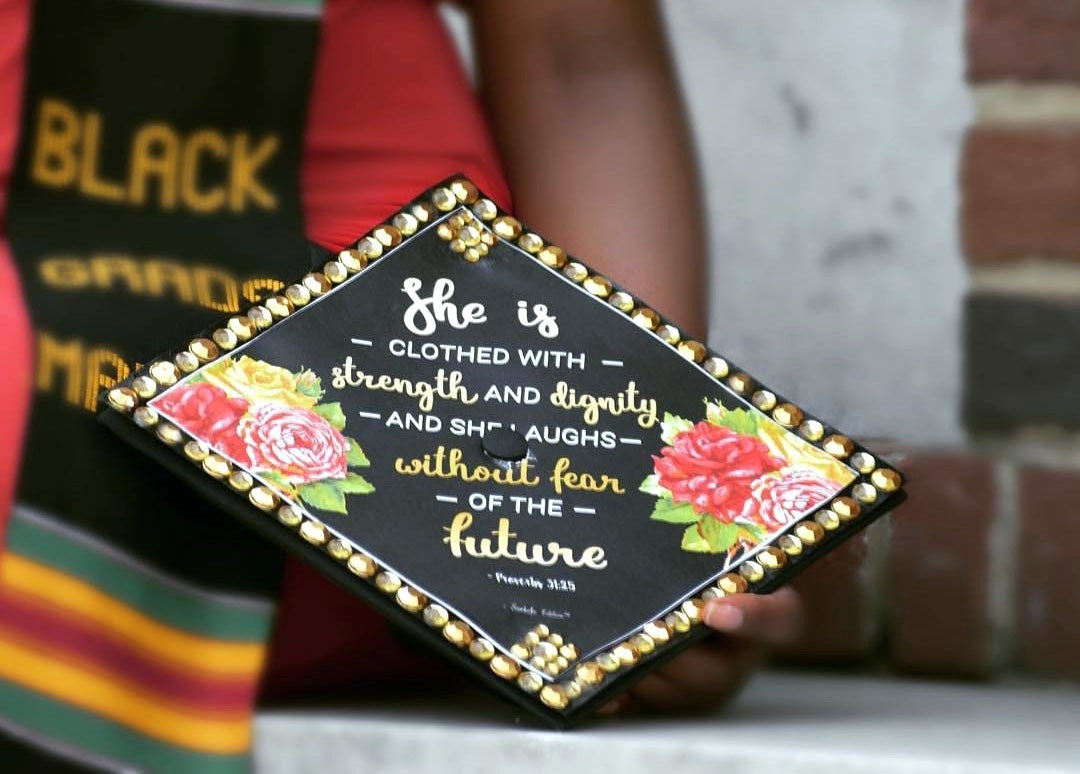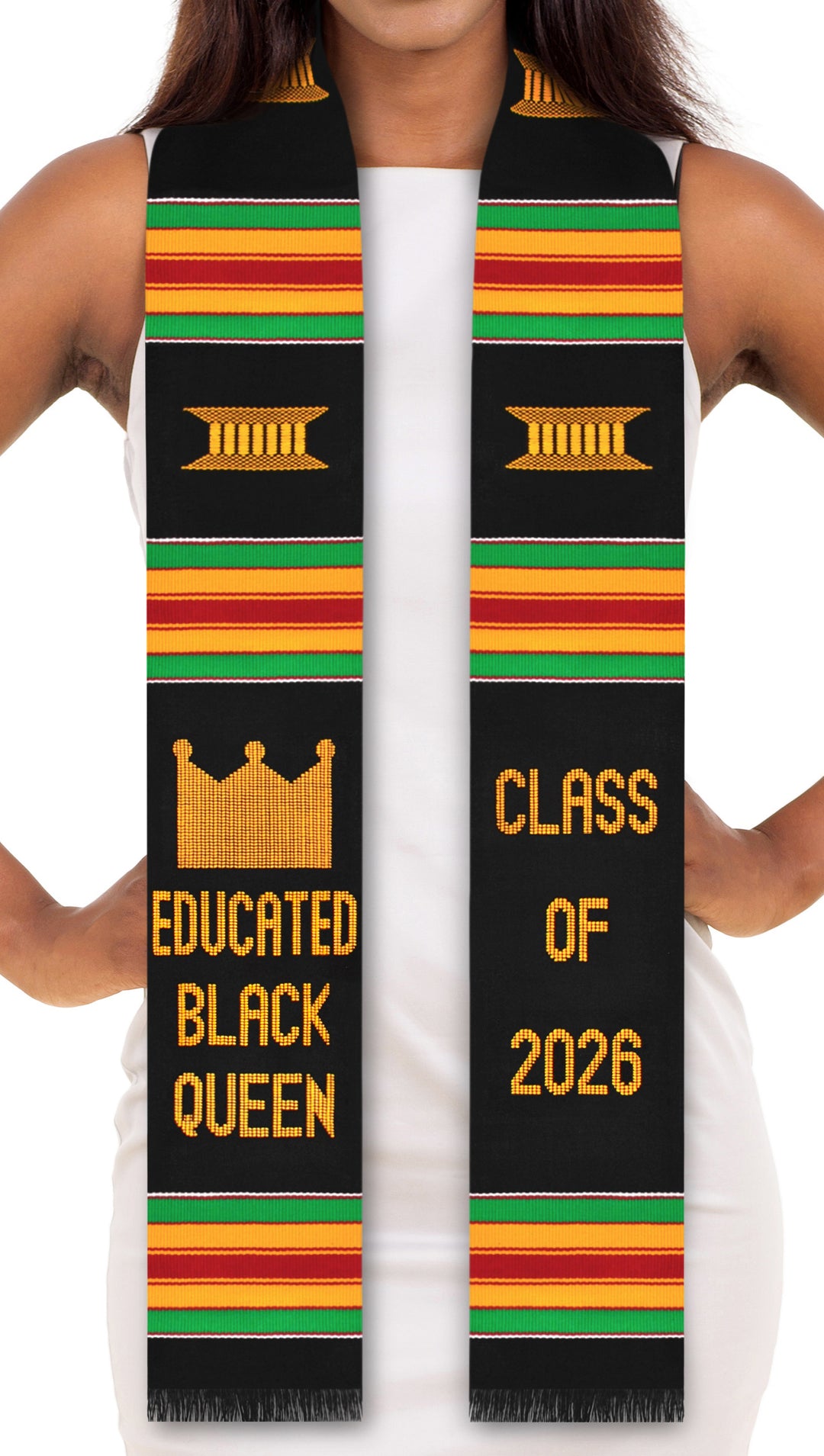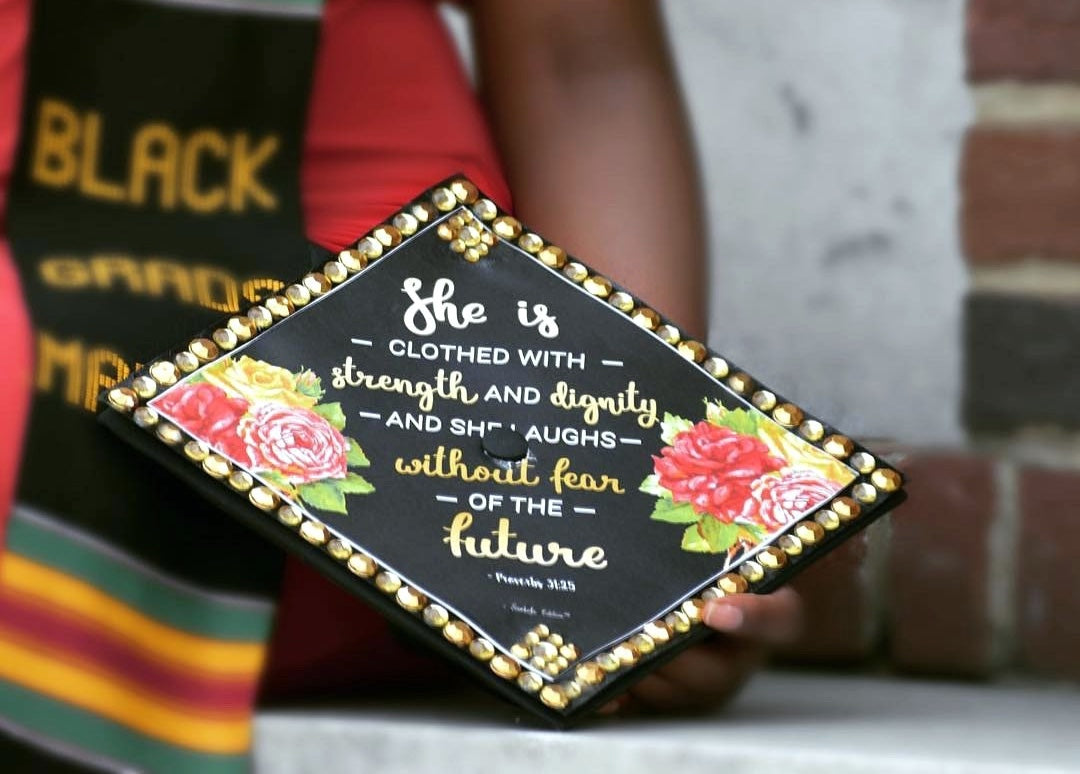What is a kente cloth graduation?
A Kente Graduation Celebration, also sometimes known as a Sankofa Ceremony, is a pre-commencement ceremony practiced in the United States, typically by African-American students graduating from high school or college, where participants are presented with a Kente stole to be worn over their gown during the graduation commencement. While a typical graduate’s stole might represent a field of study or academic achievement, a Kente stole displays the colorful, intricately woven patterns of the traditional West African Kente cloth.
Kente cloth weaving goes back almost 400 years, originating in what is now modern day Ghana. While each design, pattern, and color on a Kente cloth represents its own theme or story, the Kente cloth tradition itself holds broader value to people of African descent living outside of the continent, displayed in honor of their ancestral heritage or as a symbol of overcoming the struggles of displacement.
The Kente cloth was exposed to the African-American community in 1958, when the newly independent Ghana’s first prime minister, Kwame Nkrumah, donned the traditional garb during his stateside visit with President Eisenhower. Kente was integrated by black rights groups during the civil rights era, and later widely adopted into hip hop fashion.
The first Kente Graduation Celebration was celebrated in 1993, the idea conceived by four staff members at West Chester University who wanted to celebrate the obstacles overcome by African-American students graduating that year. The school has since seen over two thousand students walk with Kente stoles, and the tradition has since spread to graduation ceremonies at colleges and high schools across the country.
While Kente Graduation is mostly considered an African-American celebration, students from many ethnic backgrounds wear Kente graduation stoles and participate in the ceremonies every year.
































